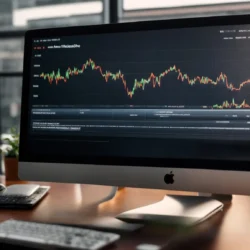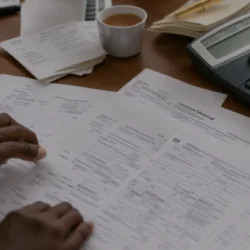With the rise of the social movement Extinction Rebellion, ongoing school climate strikes, and the popularity of the iconic teen activist, Greta Thunberg, climate change is finally getting the attention it so desperately needs. New data from the Southern Cross University in Australia found that 93 percent of Americans and Australians expressed a general concern for the environment and 77 percent of citizens want to live more sustainably. So as individuals are becoming increasingly more motivated to lead an eco-friendly lifestyle, the question now is what’s the best way to start reducing our carbon footprint?
Learning to live sustainably is a gradual process. We have to unlearn or shift some of our everyday routines like limiting shower time or avoiding take-out. So to kickstart your journey to a more eco-friendly life, here are a few simple tips you can start incorporating now.
Make your PC more environmentally-friendly
Nowadays computers are in almost every home. And if you are an avid gamer, you might have a gaming PC, as well. And while PCs aren’t the biggest polluting forces in our society, they do eat up a lot of energy. Notably, a 2015 study found that gaming PCs use roughly the same amount of energy as three refrigerators. To make your gaming PC more efficient, play around with a few computer settings. Adjust your power management settings to automatically shut off your display or go to sleep when you are away from your computer. Also, consider adjusting your GPU settings for maximum efficiency. Doing this could provide you with smoother frame rates. Changing these settings will lower your power usage and in turn, your fans won’t run as hard, so overall the appliance will be quieter.
Some gamers might be more interested in building a PC from scratch. To build a PC that uses less energy, you will need to shop for certain parts. When purchasing, check the ratio of the power use between active and idle modes and make sure it is high. Ensure the power supply you have is not too big and not too small either. And finally, utilize second-hand parts instead of new ones. Buying second-hand reduces waste sent to a landfill.
Use solar panels
Alternative forms to gas or coal-powered energy are becoming more popular, and therefore more affordable. Wind and solar power are relatively common in renewable energy sources. Installing residential solar panels is a great way to make your home greener. However, before doing so, you need to determine if your house is suited for solar panel use. Solar panels work best with roofs made from “concrete tiling, seam metal, and composite or asphalt shingles.” You also need to make sure your roof gets enough sunlight. You can use Google’s Project Sunroof to determine this. By using Google Earth imagery, the personalized calculator factors in roof shape and local weather patterns to determine your house’s solar capability. And you should check your average monthly electricity bill. If your bill is over $75, solar panels might be a good investment.
Start composting
It’s not enough to just recycle your used plastic, paper, and aluminum. You should also consider “recycling” your food scraps, as well. Composting can help do just that. Organic material like food and yard waste can be composted instead of thrown into the landfill, where they can release the greenhouse gas, methane. Currently, nearly 30 percent of what we throw away could actually be composted. Adding compost to your soil will help your plants grow, reduce your dependency on chemical fertilizers, and help prevent plant diseases and pests.
Becoming an environmentally-efficient household is a commitment, but knowing you are doing something good for the planet is certainly worth the effort.




